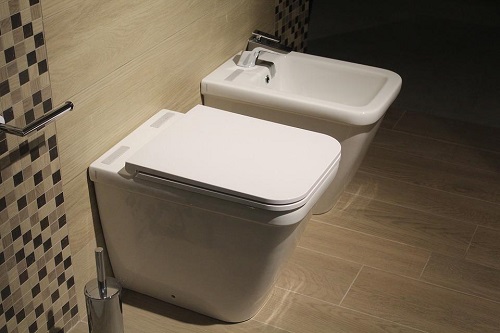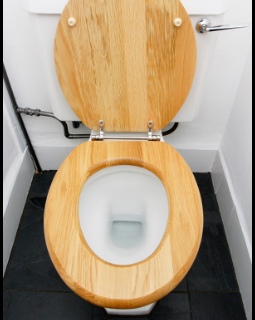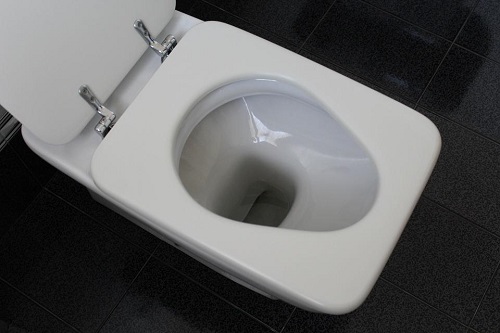A toilet is one of the few things that every home must have. Toilets and plumbing fixtures have been around for more than 150 years. This seemingly simple household fixture is undoubtedly transforming modern lives, improving hygiene, and making the daily routine of using the loo a seamless experience. Today, nearly all toilet units are made of bone-white porcelain, and for good reasons. Both the color and material are designed for public health reasons. But why are toilets made of porcelain and not other materials like plastic or metal? Read on to understand why.
A Brief History of Toilets
Romans used to go to public baths and do their business on stone-made benches, which were among the earliest public lavatories. Later, toilets built into the floor became the preferred option of wealthy people, but it caused a stink. Toilets that are found in public places like parks and public gardens were the norm for a long time — often shared by homes in big cities.
Few people know that flushable toilets have existed since 1592, but they took 7.5 gallons of water to flush, compared to just 1.6 gallons of water used today. It was a sanitary cesspool, but not anymore — and it was not safe for people to flush it. That’s why flushable lavatories didn’t begin to gain traction until 1775 when Alexander Cummings created the pipe that would allow sewage gases to rise up into the air when it flushed. The invention of the ballcock, made by Thomas Crapper, revolutionized the toilet industry and is largely why going to the crapper is a popular phrase today.
But toilets have been made from porcelain for a couple of centuries, even though many parts of the toilet are made from plastic, wood, or metal. But is porcelain the only way to become the King of the throne?
Why Are Toilets Made of Porcelain?
It’s easy to clean toilets made of porcelain. They are also inexpensive to make and very comfortable to use. No matter how well you seal a wooden toilet, it is porous and expands when exposed to water. Although metal is very convenient, easy to make, and durable, it’s frigid and unpleasant to sit on. Modern plastic is possible as a material for toilet seats, but it is porous and warps when put under the repeated load that toilet seats are subject to.
The smooth surface of porcelain toilets and sinks is extremely durable, and washing it is easy, which is critical for public health. The toilet material has enabled humanity to have better health care during the last two centuries.
Ceramics have been used for nearly 30,000 years, with the first glazes used for 8,000 years. Ceramics are made from glazed porcelain to give them a shiny appearance, which makes toilets so durable. The production process of toilets starts with the clay being formed in a mold and then fired to a high temperature. Once that is done, it is glazed and then kiln-baked again.
Toilets are fired up until they’re natural-looking, and a lot of people thought that color was trendy until the 1970s. Today, nearly all toilets are white because it’s very easy to clean, and there is no place for dirt to hide.

Will Future Toilets Still Be Made of Porcelain?
We’ve all sat on the same type of toilet for a few hundred years now. Some people like fancy toilet seats, but toilet seats are basically still made from porcelain. But why? Some people just don’t like the look of porcelain toilets, and some prefer plastic toilets, too. Another factor is that plastic toilets are tough, and they’re just as expensive. But is there some fancy new material that’s better than porcelain for holding up to our modern tastes?
Toilets have to do three things well. First, it needs to have an effective flushing mechanism. What’s more, the toilet should be strong enough to withstand the load of people who sit on it. And it needs to be safe and durable. Because a lot of people are going to sit on it, including extremely heavy people are heavy, it turns out porcelain jigs perfectly meet all of these requirements.
Most important to the user is that the toilet is a decent waste removal machine. What looks like running water down a rabbit hole to some distant place is a pretty complicated machine that uses a lot of complicated electronics and mechanical parts. It makes sense because everything about the toilet is so intricate.
The tanks, bowls, jets, and traps work very well together. Toilets made from high-quality natural stone and water, called vitreous china, are very robust. Moreover, it is fairly straightforward to make porcelain toilets from inexpensive materials, and they are glazed before being put in a kiln to cool down.

Plastic is a material that is formed by extruding or injecting plastic into an object. Plastic is prohibitively expensive to make, even for something as intricate as a toilet. Stainless steel toilets are stronger and easier to manufacture, but they are expensive. Another problem with steel toilets is how it feels to users. Stainless steel is tough and extremely strong, but it’s very sensitive to temperature changes. It’s as though everything you touch will cause you to freeze your butt.
So, moving into the future, porcelain is still a great option for homes because it can withstand a lot of moisture. It may sound simple, but water and bacteria can easily get inside porous materials. A porcelain toilet works well at keeping water out of it, largely thanks to its intricate design. After the toilet is coated with a porcelain glaze, it is put in a kiln to dry and cure. Unlike, say, grout in a shower, which soaks up water and bacteria, the porcelain glaze on a toilet prevents bacteria from growing on the surface of the toilet.
Porcelain glaze also makes it much easier to scrub up all the grime that builds up on a toilet surface. Imagine if cleaning the toilet wasn’t so enjoyable. And every year, more aggressive toilet cleaners claim to do better work on the toilet bowl. Kohler, for instance, ensures that their toilet bowls are strong enough to stand up to pressure from abrasive and chemical cleaners for an average of 80,000 times.

